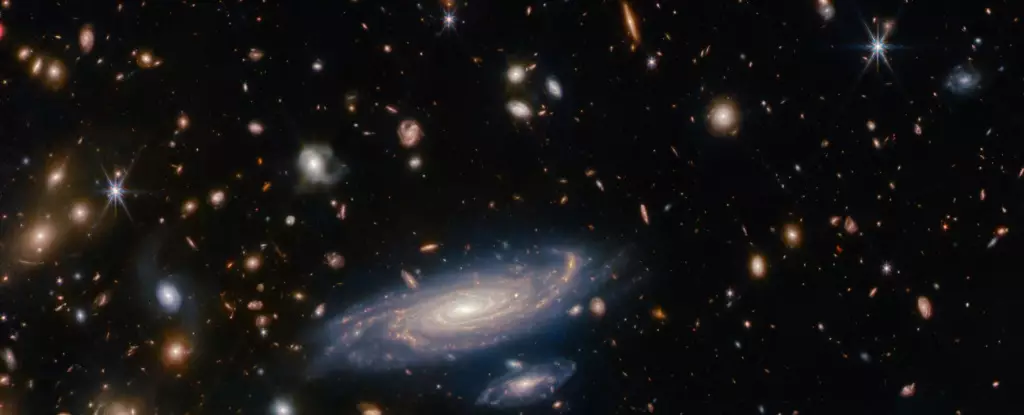The James Webb Space Telescope (JWST) has a primary science objective of observing the early universe, specifically the epoch of the first galaxies. Astronomers are eagerly collecting data from JWST to gain a deeper understanding of the formation, evolution, and composition of these early galaxies. In a recent study published in Nature Astronomy, a Danish research team claims to have observed some of the very first galaxies with the JWST, offering valuable insights into their characteristics and origins.
Traditionally, it has been established that the ratio between galaxies and their heavy elements in the local universe has remained constant over approximately 12 billion years. However, the observations made with JWST challenge this assumption. The researchers discovered that these early galaxies exhibit a different ratio of stars to heavier elements. This implies that they have not yet undergone the typical cycles of star formation and death, which enrich the gas clouds with metals.
To gain a better understanding of these early galaxies, the team of astronomers examined 16 galaxies, believed to be some of the earliest ever observed. Their analysis showed that the chemical abundances in these galaxies are only one-fourth of what is observed in galaxies that formed later. This finding indicates that the early galaxies are still closely connected to the intergalactic medium and continuously receive pristine gas, which dilutes their metal abundances.
As the first clumps of gas began to gravitationally clump together, the first stars and galaxies formed. The research team discovered that these early galaxies possess significantly fewer heavy elements than expected based on their stellar masses and the amount of new stars they have produced. This result challenges the current model of galaxy evolution, which assumes a relationship between the number of stars formed and the formation of heavy elements. These findings align with theoretical models of galaxy formation, suggesting a strong connection between the earliest stages of galactic evolution and the intergalactic medium.
The researchers emphasize that these observations are just the beginning of understanding how galaxies in the early universe were formed. JWST is expected to provide a wealth of additional data, allowing for a more comprehensive analysis. With ongoing observations and studies, a clearer understanding of the first billion years after the Big Bang and the formation of galaxies and structures within the universe is expected to emerge.
The James Webb Space Telescope’s recent observations of the earliest galaxies challenge our existing understanding of galactic evolution. These observations indicate that these early galaxies have a lower abundance of heavy elements due to their connection with the intergalactic medium and the continuous influx of pristine gas. As JWST continues to gather more data, it promises to unveil a deeper understanding of the formation, evolution, and composition of galaxies during the early stages of the universe. The knowledge gained from these observations will significantly contribute to our comprehension of the universe’s origins and the processes that shaped it.


Leave a Reply